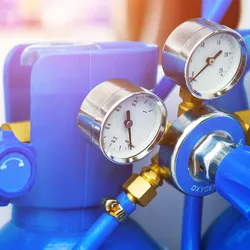
CURRENT ISSUE | VOLUME 9 - ISSUE 10 | November 2014
COVER STORY
The Good, The Bad, and The Selfie
Social media's role in the scientific community
Editor's Buzz
Business Management

The barbarians were at the gates, the handwriting on the wall. Their digital firepower was unstoppable.
Without further ado, they stormed the ramparts, overrunning scientific strongholds. There is no turning back now. Social media is a juggernaut, its impact profound and already making itself felt in ways that few could have envisioned.

No matter what field you serve, your role as a modern laboratory manager requires an intimate understanding of how safety, productivity, and sustainability work together to determine the success of your entire operation in achieving accurate results and containing costs. It’s no surprise that one of the biggest challenges of running a successful lab operation is meeting all these expectations without sacrificing any one of them.
Leadership and Staffing
Laboratory Technology


Our two highlighted tradeshows this month include the Materials Research Society Fall Meeting and Exhibit (MRS) and the American Society for Cell Biology’s annual meeting (2014 ASCB/IFCB). The 2014 MRS Fall Meeting takes place November 30-December 5, 2014 in Boston, Massachusetts, featuring over 6,000 presentations. Not long after, the 2014 ASCB/IFCB Meeting–a premier biomedical research conference–runs December 6-10 in Philadelphia, Pennsylvania. Its Keynote Talks will span the origin of life to the cosmos. Remember that the companies highlighted here in Tech News will be exhibiting, but these specific products may not be at the shows.
Ask the Expert

Reginald Beer, PhD, medical diagnostics initiative leader at Lawrence Livermore National Laboratory, talks to contributing editor Tanuja Koppal, PhD, about the trends and innovations in digital PCR. While touting the advantages of digital PCR, he explains that not every lab needs to invest in this technology. Lab managers should look closely at their samples and assays to determine if digital PCR is needed for their application.
Lab Health and Safety
Lab Health and Safety Tips
Product Focus

Chromatographers often need to balance the convenience of universal-use columns against the sensitivity and resolution of specialized columns. “Where labs may at one time have employed a nonpolar, all-purpose column, they now seek columns engineered for chemical families or even specific methods,” says Timothy Anderson, GC products manager at Phenomenex (Torrance, CA).
Research-Specific Labs
Surveys

Microplate handlers are specialized robotic devices that transfer microtiter plates in three dimensional space from one location within a workflow to another. The “locations” are actually operations such as solvent addition (through liquid handling), aspiration, heating, shaking, incubation, washing, reading, and storage.

When it comes to common technology in a laboratory, centrifuges rise toward the top of the list. Centrifuges separate particles and structures suspended in liquid by applying thousands of gravitational force equivalents to the sample through spinning and play a role in a wide range of workflows and applications.
INSIGHTS
How it Works

Problem: Scientists must typically rely on high-end cell sorters in core facilities to run their samples. These cell sorters—equipped with five or more lasers and double digit detection channels—were originally utilized to answer pressing questions arising in the immunology field. However, they are overly complex for the new breed of user who sorts cells today: cell biologists and biochemists who employ fluorescent proteins and require at most four colors and one-to-two population sorting. The challenge is that as demand increases, the number of staff available to operate these complex instruments remains the same. As a result, wait times at core facilities have ballooned, literally putting research on hold until capacity is available. For the more than half of today’s cell sorting users who require four colors or
fewer sorts, the elaborate equipment is becoming a bottleneck.

Problem: Achieving successful PCR (polymerase chain reaction) results requires proper control of many factors and parameters. The yield—quantity and quality—of amplified DNA is often essential for downstream applications and ultimately successful completion of experimental research. PCR reagents, consumable sample vessels, and the thermal cycler instrument must all be properly chosen for the specific PCR application, and must also meet quality and performance requirements. In addition to these components that must work correctly in conjunction, sample preparation is typically done manually and must be done with care and accuracy.

Problem: An emergency spill response plan is part of every laboratory safety protocol. However, despite all the best precautions, accidents can happen! Laboratories often house chemicals such as acids, bases, solvents and flammables—all of which can be toxic to human health and the environment if used incorrectly or spilled.





















